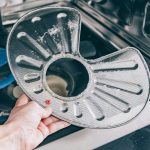In the world of sports cars, peak performance is of the essence. You want your vehicle to be as responsive and efficient as possible. A key component of this performance is your car’s braking system. The stopping ability of your car is as important as how fast it goes or how quickly it can accelerate. When you are driving at high speeds, you will appreciate how vital brake performance is. While most UK-made sports cars come with a decent braking system, there could always be room for improvement.
Brake response refers to how quickly your car will stop upon applying the brakes. A car with a good brake response is both safer to drive and provides better control, especially on the track. But how can you enhance this brake response without upgrading the entire system? This article will guide you through some practical steps to improve brake response in a sports car without a complete system upgrade.
Additional reading : What is the optimal way to adjust the seats in a British luxury vehicle for ergonomic driving?
Understanding the Basics of Car Braking System
Before you start tinkering with your vehicle’s braking system, it’s crucial to understand how it works. For a sports car, there are several critical components to consider, particularly the brake pads, the front and rear brakes, and the brake fluid.
The brake pads are what create friction against the brake disc, slowing the car down when you apply the brake. Over time, these pads can wear down, reducing the effectiveness of your braking system. Keeping them in good shape is essential.
Also read : How do you ensure proper fuel line insulation in UK-manufactured performance cars?
The front and rear brakes work together to stop the car. In many sports cars, the front brakes do more work because of the way weight shifts upon braking. This is why the front brakes are usually larger on sports cars.
The brake fluid is what transfers the force of your foot on the brake pedal to the brakes themselves. If this fluid isn’t maintained, it can lead to decreased brake response.
Improving Brake Performance: Replacing Brake Pads
Replacing brake pads is one of the easiest ways to improve brake performance. These pads are what create the friction that brings your car to a stop. By upgrading the brake pads, you can significantly enhance the braking response of your vehicle. When choosing new brake pads, consider your driving style and the type of track you frequent.
For street driving, semi-metallic brake pads are often a good choice. They provide excellent heat dissipation and are reasonably priced. For track use, opt for pads with a higher friction coefficient. These pads bite harder but wear out faster. Always consult with a trusted mechanic or brake pad rep before making this upgrade.
Adjusting Brake Balance: Front and Rear
Another way to enhance the brake response of your sports car is by adjusting the brake balance between the front and rear brakes. This step is particularly crucial for cars that are often driven on race tracks.
The front brakes are responsible for most of the vehicle’s stopping power due to the weight transfer that happens when braking. However, if the rear brakes are not doing enough work, the front brakes can overheat and wear out faster. By adjusting the brake balance, you can ensure that the rear brakes share the load, leading to a better overall brake performance and response.
Monitoring and Changing Brake Fluid
The brake fluid in your vehicle’s braking system plays an essential role in how well your brakes respond. Over time, the fluid can degrade, leading to reduced braking performance. It’s crucial to monitor the condition of your brake fluid regularly and change it when necessary.
Fresh, high-quality brake fluid will provide a firm, responsive brake pedal and improve overall braking performance. You might want to consider switching to a performance brake fluid if you frequently drive your car on the track. These fluids have a higher boiling point, reducing the risk of brake fade during high-intensity driving.
Reducing Vehicle Weight
A lighter car is easier to stop, so reducing your vehicle’s weight can have a significant impact on brake response. There are many ways to shed weight from a car, including removing unnecessary items, swapping out heavy components for lighter alternatives, or even choosing lightweight bodywork materials.
As an example, suppose you are a BMW sports car enthusiast. You might consider swapping the BMW’s stock steel hood for a carbon fibre one. The weight saving will not only improve acceleration and overall performance but also take some stress off your braking system, thereby improving your brake response.
Remember, any modifications you make to your car should be done in consultation with a trusted mechanic or an iTrader rep. They can guide you in making the right choices for your specific vehicle and driving style.
In conclusion, enhancing the brake response in a UK-made sports car doesn’t always require a complete system upgrade. By understanding the basics of the braking system, replacing brake pads, adjusting brake balance, monitoring and changing brake fluid, and shedding weight off your car, you can significantly improve the braking performance and safety of your vehicle. Always remember to consult a professional before undertaking any modifications. Safe driving!
Choosing the Right Air Intake and Rear Wing
When thinking of enhancing the brake response of your sports car, it’s easy to overlook the importance of the right air intake and rear wing. However, these components can have a significant effect on your car’s braking performance.
The air intake system’s primary function is to allow air to reach your car’s engine. This air is then mixed with fuel to generate power for the vehicle. The performance and efficiency of the air intake system can impact the overall performance of your car, including the braking response.
A cold air intake system can be a good choice for sports cars as it draws in cooler air, which is denser and contains more oxygen for better combustion. This can improve engine performance, which in turn positively impacts braking performance.
The rear wing of a sports car serves to generate downforce at high speeds. This downforce pushes the tyres into the ground, improving grip and stability, particularly during braking. This makes the car more responsive when the brakes are applied.
When choosing a rear wing, it’s important to consider the size and shape. A large rear wing can generate too much downforce, leading to increased drag and decreased top speed. A smaller, more efficient rear wing can provide the right balance of downforce and minimal drag, leading to better overall performance and improved brake response.
Considering Unsprung Weight and Track Day Factors
The unsprung weight of a car refers to the mass of the suspension, wheels, and other components that are not supported by the suspension. Reducing this unsprung weight can significantly improve the brake response of your sports car, as less mass needs to be stopped.
There are several ways to reduce unsprung weight, such as switching to lightweight wheels, using performance tyres, or upgrading to a lighter suspension system. But remember to consult with your trusted mechanic or an iTrader rep before making any changes to avoid negative impacts on your car’s overall performance.
The factors related to track day also play a critical role in improving brake response. This includes the type of track, weather conditions, and even your driving style. For example, a wet track requires more responsive brakes than a dry one. Therefore, you should always ensure your braking system is in top condition, especially before a track day.
Conclusion
In the quest for improved brake response in your UK-made sports car, there is no need for a complete system upgrade. By understanding the basics of the braking system, upgrading the brake pads, adjusting the brake balance, regularly monitoring and changing brake fluid, shedding weight off your car, choosing the right air intake and rear wing, considering unsprung weight and track day factors, you can significantly enhance your vehicle’s braking performance and safety.
Always remember the importance of professional advice when undertaking any modifications. Every sports car is unique, and what works for one may not work for another. Your trusted mechanic or iTrader rep can provide valuable guidance tailored to your specific vehicle and driving style.
Improving the brake response of your sports car is not just about speed and performance – it’s also about safety. So take the time to understand, appreciate, and enhance your car’s braking system. Stay safe, and enjoy the ride!











